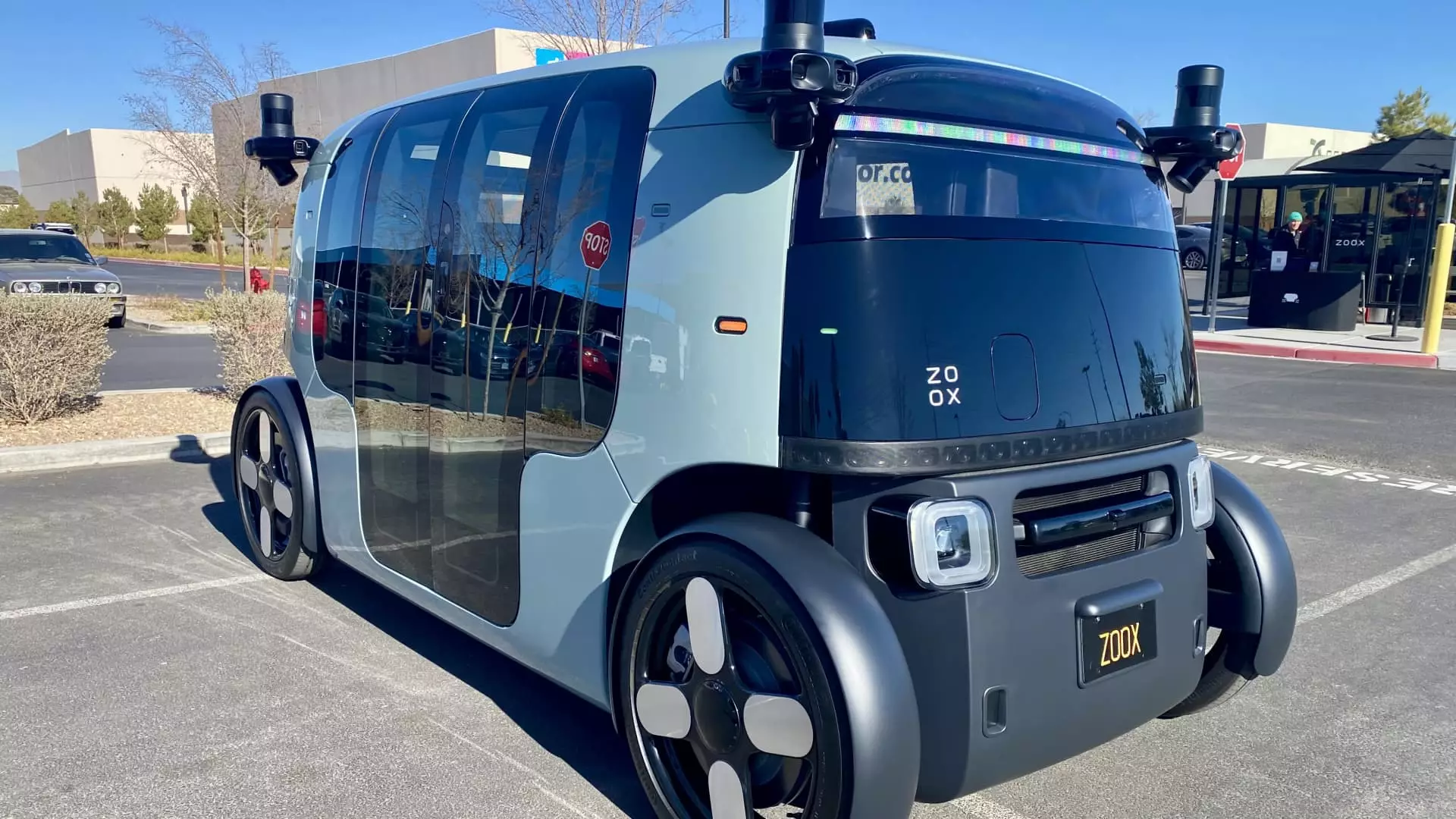In 2023, Zoox, Amazon’s autonomous vehicle division, is poised to take significant strides towards realizing its vision of a robotaxi service. Co-founder and Chief Technology Officer Jesse Levinson emphasizes the importance of this year, stating that the company plans to enhance its operational capabilities, targeting commercial rides to the public in the near future. As the autonomous vehicle landscape continues to evolve, Zoox is determined to carve a niche for itself amid emerging challenges and opportunities. This article closely examines Zoox’s ambitions, the competitive environment, and the broader implications for the autonomous vehicle sector.
Zoox’s potential to launch its “Early Rider Program” in Las Vegas signifies a pivotal moment for the company. Levinson’s comments highlight the excitement and challenges inherent in scaling operations, as the company seeks to expand beyond its current fleet of a few dozen vehicles. The planned increase in the number of self-driving cars could revolutionize the transportation landscape in urban centers, particularly Las Vegas, which is expected to be Zoox’s first commercial market. However, operating in an increasingly scrutinized environment, Zoox must navigate investor skepticism that has affected many players in the autonomous vehicle space.
What distinguishes Zoox from other players in the autonomous vehicle market is its innovative design, purpose-built for a driverless experience. Unlike traditional models retrofitted for autonomy, Zoox’s vehicles resemble futuristic pods with no steering wheel or pedals and feature seating arrangements designed for social interaction. Given the industry’s historical hurdles with vehicle design and safety, Zoox’s unique approach might offer a fresh perspective on how people will utilize autonomous transportation.
However, this radical shift in vehicle architecture and functionality presents its own set of challenges. The unconventional shape of Zoox’s robotaxis has earned it some unflattering nicknames, but it’s a crucial step in redefining urban mobility. Sam Abuelsamid, a market research expert, acknowledges that the vehicle’s form factor could serve well in urban settings where space is at a premium. Nevertheless, the practicality and acceptance of such designs among consumers remain to be seen, and Zoox will need to market these innovations effectively to create demand.
Despite the promising technology that Zoox possesses, the road to commercialization is fraught with challenges. Zoox’s operations come at a time when several established companies, including General Motors, Ford, and Volkswagen, have disbanded their self-driving divisions, reflecting a broader trend of waning enthusiasm for autonomy among investors. The recent safety concerns, especially related to GM’s Cruise unit, highlight the regulatory and public scrutiny that autonomous vehicles attract, emphasizing the importance of establishing trust within the riding public.
Furthermore, the financial model surrounding robotaxi services remains an enigma. The industry has encountered unexpected difficulties in scaling, with operational costs consistently outstripping revenues. While technological advancements continue, the unresolved questions about regulatory frameworks, insurance liability, and economically viable operational strategies loom large. Zoox must tread cautiously as it prepares to offer services, ensuring that safety remains paramount while also creating a sustainable business model.
With companies like Waymo already established as frontrunners in the robotaxi sector, the pressure mounts for Zoox to differentiate itself. Waymo’s ability to scale its services successfully, now offering hundreds of autonomous vehicles and conducting over 150,000 paid rides weekly, showcases the potential of autonomous technology but serves as a reminder of the hurdles Zoox must overcome to catch up. The narrative of autonomous mobility is not solely about technological capability but about strategic partnerships and the ability to navigate diverse regulatory landscapes.
Levinson’s aspirations echo a vision that could see autonomous vehicles integrated into everyday life significantly, if executed successfully. However, the concerns expressed by experts like Abuelsamid about the financial implications of the robotaxi business model reinforce the necessity for Zoox to solidify its strategy. In a market where risks and opportunities intertwine, every action taken by Zoox will either elevate or challenge its position in the competitive autonomous vehicle landscape.
The upcoming months could be pivotal for Zoox as it strives to transition from testing to commercial operations while facing pronounced skepticism from the investment community and industry observers. The potential for success is matched by equally significant risks, making it a delicate balancing act. As Zoox accelerates toward its goal of redefining urban mobility, it will be essential for the company to not only demonstrate the efficacy of its technology but also to establish a clear path to sustainable profitability.
If Zoox can succeed in this formidable endeavor, it could play a central role in revolutionizing transportation in major American cities, paving the way for an era where autonomous vehicles could become a preferred mode of transport. However, with the specter of scrutiny and operational challenges in its rearview mirror, only time will reveal whether Zoox can turn its ambitious vision into a reality.

